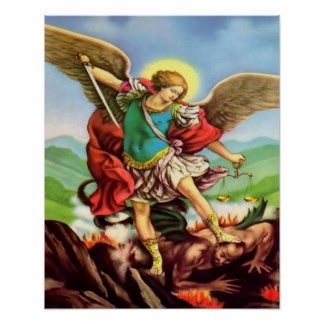Missa Papae Marcelli ( Mass of Pope Marcellus ) - Palestrina [The Tallis Scholars]
Kyrie
Gloria
_________________________________________________
Credo
_________________________________________________
Sanctus and Benedictus
__________________________________________________
__________________________________________________
Agnus Dei
_________________________________________________
The Tallis Scholars are a British vocal ensemble normally consisting of two singers per part, with a core group of ten singers. Formed in 1973 by their director Peter Phillips, they specialise in performing a cappella sacred vocal music written during the Renaissance by composers from all over Europe. They are currently recognised as one of the world-leaders in this field, having risen to a place of prominence among other professional ensembles.
Giovanni Pierluigi da Palestrina (1525 or 1526 - 1594) was an Italian Renaissance composer of sacred music and the best-known 16th-century representative of the Roman School of musical composition. He has had a lasting influence on the development of church music, and his work has often been seen as the culmination of Renaissance polyphony.
Picture: Section of van Eyck's Ghent Altarpiece. It is a very large and complex early 15th century Early Flemish polyptych panel painting. The altarpiece consists of 12 panels, eight of which are hinged shutters. They are painted on either side, giving two very distinct alternations depending on whether the outer wings are open and closed. Outside of Sundays and festive holidays the work was displayed with the outer wings closed, and was often covered with a cloth. The work was commissioned from Hubert van Eyck of whom little is known. Hubert was most likely responsible for the overall design, but died in 1426. It seems to have been principally executed and completed by his younger and better known brother Jan van Eyck between 1430-32. Although there have been extensive attempts by many art historians over the centuries to isolate the passages attributed to either brother, no separation has ever been convincingly established. Today most accept that the work was probably designed and constructed by Hubert, and that the individual panels were painted by Jan after his return from diplomatic duties in Spain (Wikipedia)
_________________________________________
For Emily: the 'Ah's have it!
A cappella
From Wikipedia, the free encyclopedia
A cappella [a kapˈpɛlla] (Italian for "in the manner of the chapel")[1] music is specifically group or solo singing without instrumental accompaniment, or a piece intended to be performed in this way. It contrasts with cantata, which is accompanied singing. The term "a cappella" was originally intended to differentiate between Renaissance polyphony and Baroque concertato style. In the 19th century a renewed interest in Renaissance polyphony coupled with an ignorance of the fact that vocal parts were often doubled by instrumentalists led to the term coming to mean unaccompanied vocal music.[1] The term is also used, albeit rarely, as a synonym for alla breve.[2]
[And here's me thinking she was trying to insist it was 'ah,capella, and not simply 'capella.'!
....however, I don't think that was a major slip on my part...more of a minor first, and so I have to humbling accept the fact that, understandably in this instance, I willingly and happily eat 'humble pie' along with the triffle ]
_____________________________________
Miserere - Allegri . The Tallis Scholars
____________________________________________


No comments:
Post a Comment